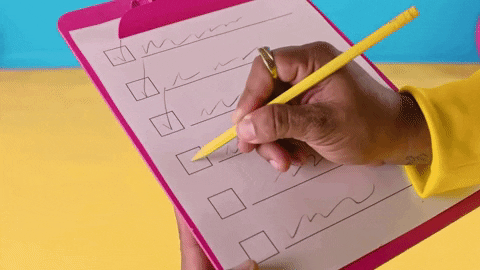I’m taking a break from a chapter in Rethink’s book but will pick up next week on some metaphors underwater! I’d like to spend a little more on one topic: good old time. Specifically, learning how to manage time in a project, how to manage time between projects, and how much time is enough?
Within a project, at Rethink, we have things like the brief that outlines the stages of the project, and the teams have frequent meetings/check-ins to ensure everyone is on track. This is also to help catch any issues before they do become issues. I found this is great as everyone is accountable and we have to speak to our part, and the floor is also open to speaking up if needed!

Through being in IDEA, I’ve heard from a lot of designers that when there are more boundaries, it’s a better challenge to solve. That certainly rang true when I did work on school projects. What I’ve noticed at a more granular level of completing a project is I’m much more effective when I attempt to plan tasks – even if I’m off at what I need to do or how much time it might take. When I pre-plan and also timebox my tasks, it helps me focus versus jumping in without a plan. I would jot down the smallest of tasks (eg. check image size) to the biggest of tasks (eg. ideate 100 ideas). It feels nice when I check a little box!
Between projects, everyone I had a chat about learning how to manage projects and their time had big nods. This was a common challenge, either when they were new in the workforce and/or still experience challenges with now. This is quite true as a bunch of people I booked meetings had very full calendars! I noticed I was learning how to manage time between a more linear-thinking project vs. a creative-thinking project…and juggling other projects assigned along the way.

What I found I wanted to do at first was to try and finish the linear project to save bigger blocks of time for the creative project. I found it somewhat worked but as other time-sensitive projects came, I had to learn to work on the creative project in smaller time chunks. One rethinker confirmed this as you might not always have the time or won’t be in a creative headspace so you may have to learn to generate ideas bit by bit in smaller time chunks (or sort it out when you are taking a shower or walk)!

Lastly, in knowing how much time is enough, one thing I’m trying to do is work back schedules and saving extra time in case I need it. Also, I guess in the beginning if you’re new at something, you’re less able to estimate time. Lastly, once piece of advice from a very seasoned designer was on how one can keep working away at something to “perfection” but we can learn how to make smarter decisions and use the boundaries of time!


Leave a Reply